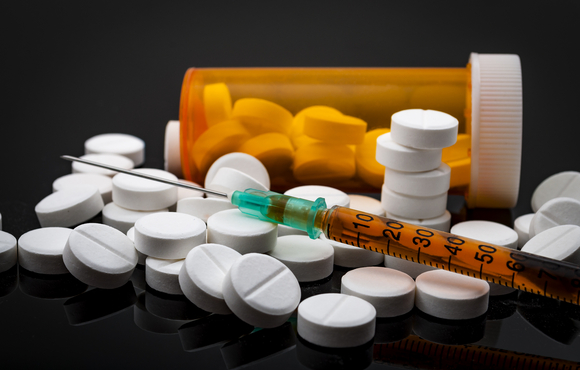ELLICOTT CITY, MD – Howard County Executive Calvin Ball highlighted reassuring opioid data for 2021, with a decrease in both non-fatal and fatal overdoses. In 2021, nonfatal overdoses fell from a high of 171 in 2017 to 137 in 2021, a 20% decrease. Fatal overdoses fell from a high of 51 in 2017 to 20 in 2021, a 61% decrease. County Executive Ball pointed to Howard County’s collaborative efforts to combat the opioid epidemic, including a new innovative partnership between the Department of Fire and Rescue Services and Grassroots that allows to direct transport of opioid-presenting patients to the New Beginnings Crisis Stabilization Center, rather than the hospital.
In Howard County – we’ve redoubled our efforts to combat this crisis, and we’ve made immense progress. This new initiative is one more tool in our arsenal to combat the opioid endemic in Howard County – connecting those in crisis with the valuable resources and support they need to recover. Thank you to all our partners, our Fire and Rescue team, Police Department, Health Department, and Grassroots – our success means more lives saved. We must continue to work together across public and private entities to reduce harm, get people the help they need, and bring an end to this crisis.
Opioid Trend
Prior to the pandemic, Howard County made measurable progress on the opioid crisis, with a continued decrease in both non-fatal and fatal overdoses from 2017 to 2019. Nonfatal overdoses fell from a high of 188 in 2018 to 152 in 2020, a 19% decrease. However, the COVID-19 pandemic brought many challenges to those facing substance misuse. In 2020, Howard County saw a 43% increase in opioid related deaths compared to 2019, part of national and statewide trend as the COVID-19 pandemic exacerbated opioid and substance misuse. The State saw its highest opioid fatality number to date in 2020 at over 2,500 deaths statewide. That trend continued for many communities in 2021 throughout the country.
However, Howard County made positive progress in 2021 compared to 2020, with nonfatal overdoses decreasing by nearly 10% and fatal overdoses decreasing by 57%. In 2020 Howard County reported 47 fatal overdoses, compared to 20 in 2021. Notably in 2021, Narcan was administered to every non-fatal overdose.
Patient Transport Partnership
In December, the Howard County Department of Fire and Rescue Services (HCDFRS) began a program to allow for the transportation of opioid-presenting patients directly to the Grassroots Crisis Intervention Center as an alternative to conventional hospitals. Stable patients with opioid-related complaints can now be taken directly to the Grassroots facility for prompt, and often same day, referral to a treatment center. This is only the second EMS program in the state that takes stable opioid-use disorder patients directly to a stabilization center.
This initiative is part of the State Opioid Response (SOR) program at Grassroots, providing an alternate destination, besides a hospital, for opioid-related patients and supportive care. To be transported directly to Grassroots, individuals must have opioid-related complaints opioid-related complaints, meet certain criteria, and voluntarily consent to be transported to Grassroots. Patients are then provided supportive care, can be treated for opioid withdrawal, and are screened for referral to a recovery treatment program. Grassroots’ SOR program is one of only two in Maryland and has a success rate of 75% in getting these patients into a treatment facility, most within 24 hours
“The effects of the opioid crisis continue to adversely impact this country. Helping to get all of our patients to the most appropriate care, in a timely manner, while addressing their unique needs is essential,” said Fire Chief Louis Winston. “This program will benefit our patients by helping them to get the most appropriate services in a safe and effective manner. By providing an alternate, more effective solution for opioid-related health care such as direct transport to Grassroots, opioid use disorder patients can rapidly be placed into a treatment program”.
“Giving people access to critical help as quickly as possible results in the best outcomes”, said Roe Rodgers-Bonaccorsy, PhD, Director of the Bureau of Behavioral Health for the Howard County Health Department. “This program between the Howard County Department of Fire & Rescue and Grassroots will help us to achieve positive outcomes and save lives.”
“As the new Chief of Police, I am committed to working with all of these partners to make this a top priority,” said Police Chief Greg Der. “We are not immune to this epidemic in Howard County, but with initiatives like this one, we are moving in the right direction. This is a real solution impacting real people living right here in this county.”
“Howard County is leading the way in supporting individuals seeking help for opioid-related issues. Immediate referral to a treatment program is the critical first step in the journey of recovery,” said Grassroots Executive Director Dr. Mariana Izraelson. “The partnership between Howard County Department of Fire and Rescue Services and Grassroots means people in need will be able to access immediate care upon arrival at the crisis intervention center, receive treatment for withdrawal there, followed by referral to a recovery program. This timely care has the best chance of success.”
In addition to placement into recovery programs, the Grassroots team has multiple resources to help patients such as access to food, clothing, health care, and a safe place to stay.
Grassroots provides the county’s only emergency shelter and 24-hour crisis intervention, suicide prevention, and support for individuals and families with a mental health, substance use or homelessness crisis. It operates the crisis intervention center in Columbia and the Grassroots Day Resource Center in Jessup. For information, please call 410-531-6006 or visit the Grassroots website.
